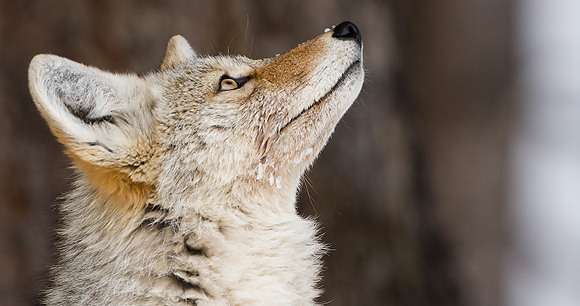
Trapping
Trapping is a method of capturing wildlife by humans using devices specifically designed to restrain an animal in place without the need for continual human presence. Traps can be set and left, making them resource efficient from the standpoint of the trapper.
Traps may be used to both capture and kill animals. Most people are familiar with snaptraps and glue traps used domestically to control small pests by killing them. Other forms of traps include leghold traps which, when sprung, grab and hold limbs; wire snares which, when tripped, encircle and tighten around body parts; and Conibear traps which are designed to kill large animals by clamping down on their necks. Box traps are the most humane traps because they are designed to capture the entire animal in an enclosure. Even non-lethal, non-injurious traps are inhumane, however, if left for extended periods of time because trapped animals can die of thirst, hunger, exposure, self-mutilation, or predation. (Glue traps in particular may seem “less gruesome” on the surface but in practice are terribly inhumane. Quite often the trapped animals suffer greatly as they struggle and die slowly—over a period of many hours or days—after being subjected to extreme stress and fear.)
The non-selective and highly destructive steel-jaw leghold trap is the most common type of trap, used to catch millions of animals for their fur each year in the US Invented in the 1820s, this trap consists of two opposing spring-powered steel jaws that slam violently together on any animal who triggers the pan between them. Victims suffer excruciating pain and fear as they tear ligaments and break teeth in their struggle to free themselves from the bone-crushing jaws. Some may even chew off a trapped paw to escape on three legs.
AWI has been campaigning vigorously for years against the steel-jaw leghold trap in this country and abroad. It has been condemned as inhumane by the World Veterinary Association, the National Animal Control Association of the United States, and the American Animal Hospital Association, yet its widespread use continues.
Although there are fewer than 100,000 licensed trappers in the US, each year an estimated 3–5 million animals are caught and killed for their fur. Millions more are trapped annually by state and federal agencies, private nuisance wildlife control operators, and individual landowners. Unknown numbers of non-target animals—including dogs, cats, birds, deer, and threatened and endangered species—are also trapped and injured or killed.
Trapping in the US is regulated by individual states. However, regulations vary widely and may be poorly enforced. Some states only require trappers to check their traps once every three or four days, while others do not have any requirement at all, allowing trappers to leave their devices unattended indefinitely. If the animal is still alive when the trapper returns, he or she is usually killed by a blow to the head or suffocation induced by the trapper standing on the animal’s chest. Trappers seldom kill animals by gunshot, as a bullet hole reduces a pelt’s value.
The US lags far behind the rest of the world in regard to trapping reforms. More than 85 countries have banned or severely restricted the use of the leghold trap, including all member countries of the European Union. Only eight states have enacted bans or significant restrictions on leghold traps: Florida, Rhode Island, New Jersey, Arizona, Colorado, Massachusetts, California and Washington.
Penning
The practice of confining coyotes and foxes in pens and exposing them to packs of dogs for “sport,” “entertainment” and dog training is called penning.
Live-trapped coyotes and foxes (generally caught with leghold traps or snares) are often shipped and traded across state lines for sale to penning facilities. The wild canid is released into a pen where he or she may be chased down by dogs. Most penned coyotes and foxes, after being subjected to the terrifying ordeal of being stalked and cornered by the dogs, are torn apart and killed in a mad frenzy. As the wild canids are killed, the pens are restocked with more victims.
Although outlawed in many US states, penning is still legal in several states throughout the Southeast and Midwest, despite a 2008 resolution by the Midwest Association of Fish and Wildlife Agencies which urged the adoption of state regulations to prohibit the practice.